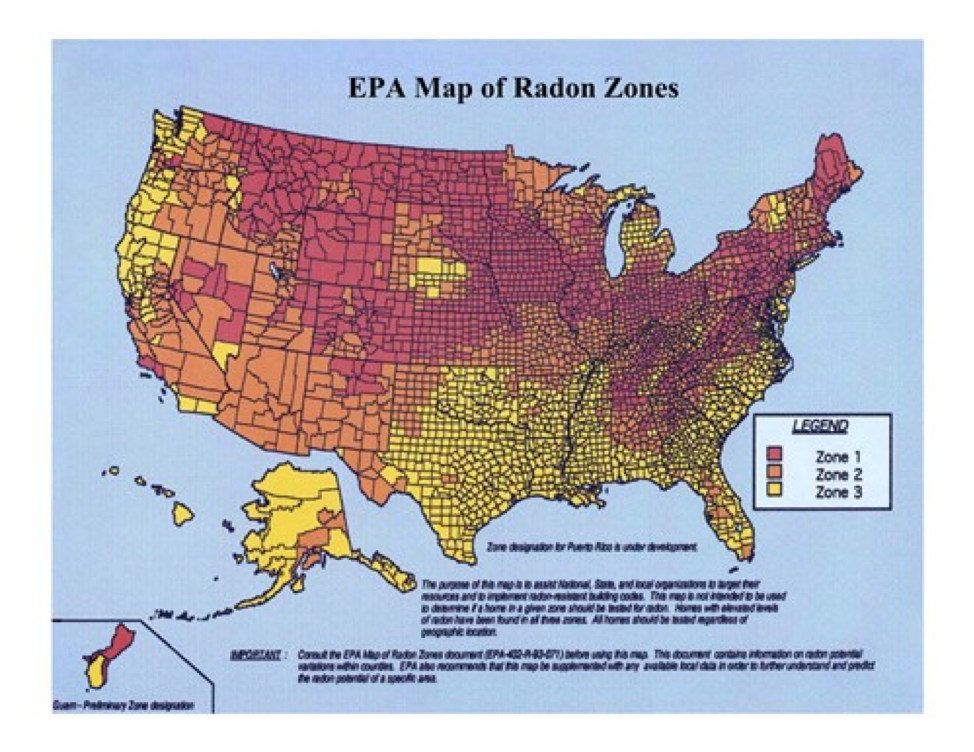Porcupine Real Estate Blog
All You Ever Wanted to Know About Radon

Guest post by Dustin Dodge of Working Dog Home Inspections
Radon is a radioactive gas that has been found in homes all over the United States and is a known problem in New Hampshire. It comes from the natural breakdown of uranium in soil, rock, and water and it gets into the air you breathe. Whether or not a home has radon is dependent on the geology beneath the structure.
Radon typically moves up through the ground to the air in your home through cracks and other holes in the foundation. Since a basement is a pocket in the ground, radon can build up & cause unhealthy levels of gas. There is no way of knowing if a home has high levels of radon without testing.
What does radon do?
Radon decays quickly, giving off tiny radioactive particles. When inhaled, these radioactive particles can damage the cells that line the lung. Long-term exposure to radon can lead to lung cancer, the only cancer proven to be associated with inhaling radon. Radon is the second leading cause of lung cancer, after cigarette smoking.
How is it measured?
Radon levels are measured in picocuries per liter, or pCi/L. Levels of 4 pCi/L or higher are considered hazardous. Radon levels less than 4 pCi/L still pose a risk and in many cases can be reduced, although it is difficult to reduce levels below 2 pCi/L. Radon mitigation systems are common and a great way to bring the gas to a more acceptable level.
If you have questions on radon testing, contact Dustin at Working Dog Home Inspections.

